Bitcoin is giving gold a run for its money: trader
How safe is the safe haven trade?
Stocks ended the shortened holiday week close to the flatline. Bonds and gold finished under pressure, as investors rotated out of traditional safe haven assets. US yields pushed higher on the heels of a better-than-expected jobs report coming in at 222k (above consensus at 185k).
US 10-year yield — 5 years
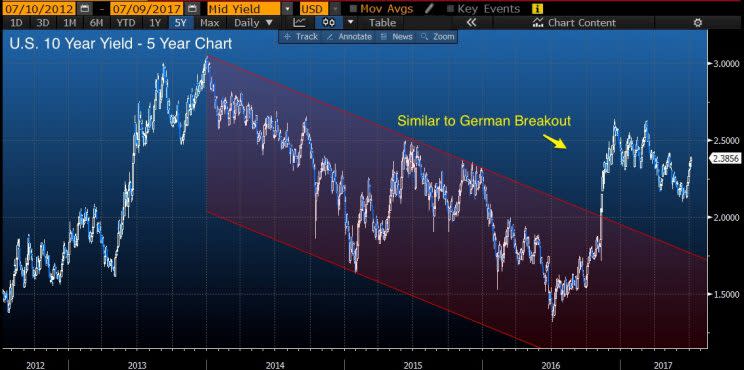
German 10-year yields also rose, holding onto their post-election breakout last November.
German 10-year yield — 5 years
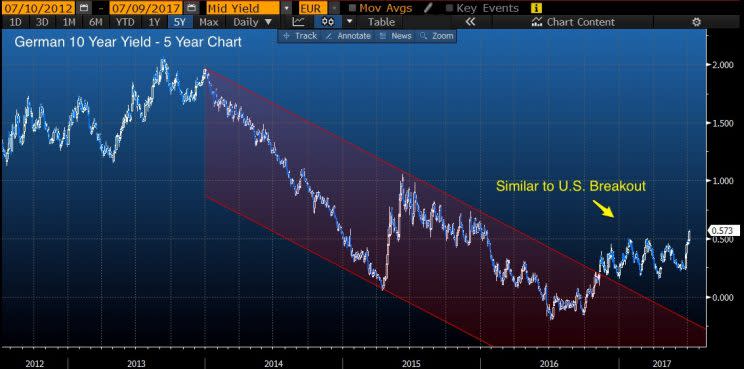
Will Japan be next?
Even Japanese 10-year yields—in a nearly two-decade slump—are threatening to break the downtrend line.
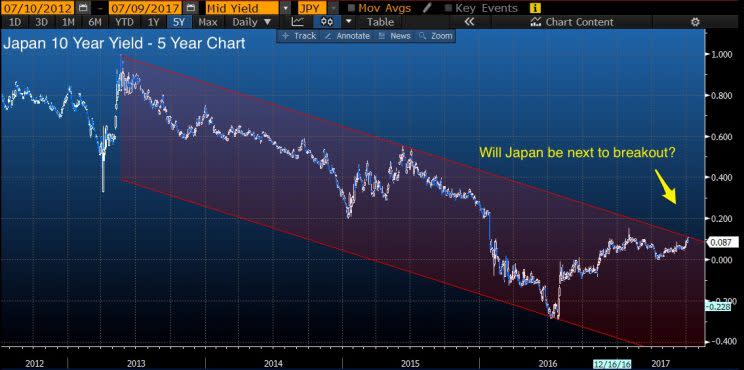
However, of more concern for asset allocators, is gold (GLD, GC=F)—the ultimate safe haven trade. This is the asset that’s supposed to protect us from all adversaries (e.g., inflation, geopolitical turmoil … even a nuclear event).
Early in the year, the yellow metal put in a bottom and, certainly on a short-term basis, gold bugs could rejoice. After the lows late December, gold shot up a quick 25%, and even after a rough couple of weeks, is still up close to 15% for 2017.
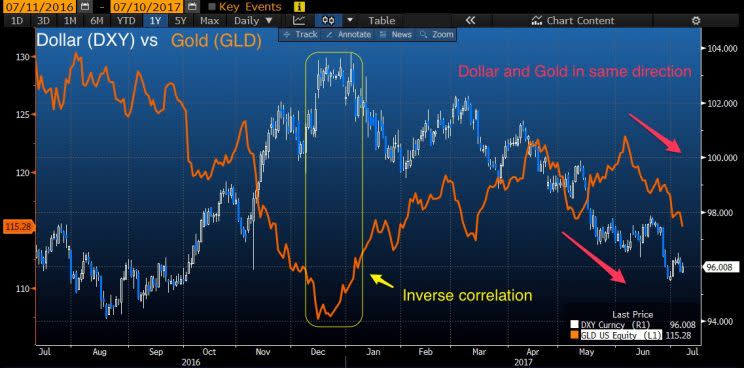
Despite its year-to-date strength, I find the breakdown last week concerning, as it comes in the face of dollar weakness, where there is a strong inverse correlation. Gold’s selloff after the election was textbook, as the US dollar climbed higher on hopes of the Trump agenda igniting the reflation trade.
The rise in gold after the bottom in December was in lockstep with the fall of the Greenback. However, starting in June, the ultimate safe haven trade has struggled even in the face of continued dollar weakness.
Benign inflation certainly hasn’t helped the gold price action. Central bankers are quick to tell us they expect inflation to meet their target, failing to recognize that cheap oil, which touches the cost of many products, is a secular—not cyclical—dynamic.
Geopolitical instability or military action often provides a lift in gold. However, following North Korea’s test launch of an ICBM near the Fourth of July break, gold barely budged, dashing hopes of a breakout.
Bitcoin the rising threat?
Cryptocurrencies and, of course Bitcoin, have captured the attention of nearly every speculator on the planet. There’s no doubt the underlying technology, blockchain, is here to stay. Many banks, including JPMorgan (JPM), are exploring it as well as developing their own systems.
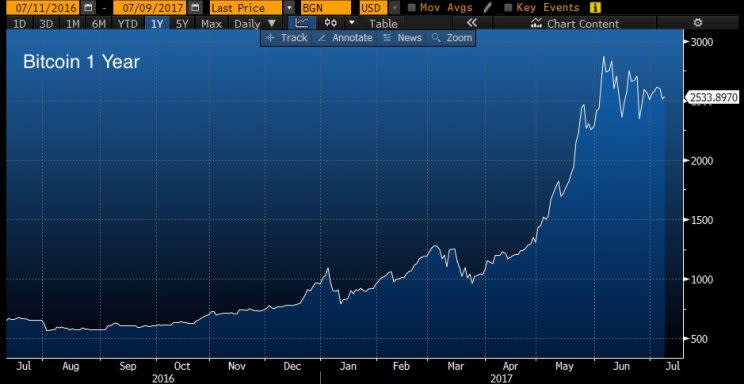
It wasn’t that long ago that I interviewed NASDAQ Vice Chair Sandy Frucher on iHeart Radio, where he told me to expect NASDAQ to embrace blockchain for its back office and clearing operations.
Gold has long been the alternative to fiat currencies—giving its holder a hard asset that retains value in the face of any geopolitical, inflationary, or economic challenge.
How much is that worth in the face of competition? Therein lies the concern. The first human interaction with gold likely took place nearly 3,000 years before Christ—so there’s some 5,000 years of history. It’s way too soon to write off gold as the alternative currency of choice, but competition usually means lower prices.
Bitcoin’s success will likely come at the expense of gold and provide another example of the zero-sum-game.
————————————————-
Please contact your Belpointe investment advisor representative if there are any changes in your financial situation or investment objectives.
Investment advice is offered through Belpointe Asset Management, LLC. Past performance is no guarantee of future returns. Insurance products are offered through Belpointe Insurance, LLC and Belpointe Specialty Insurance, LLC. It is important to read our email disclosures available at this link: http://belpointe.com/disclosures.

